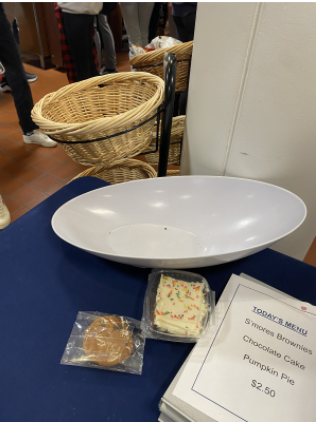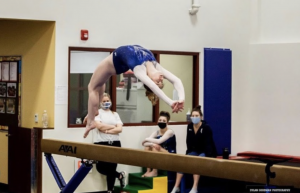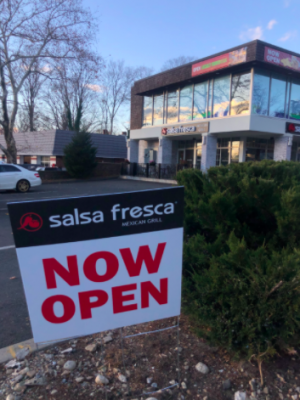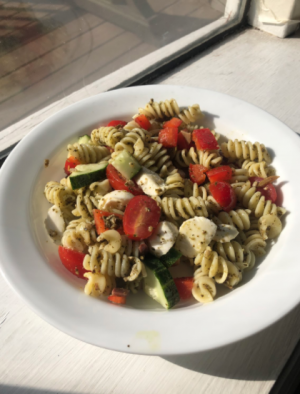Low food stock during third lunch wave prompts frustration
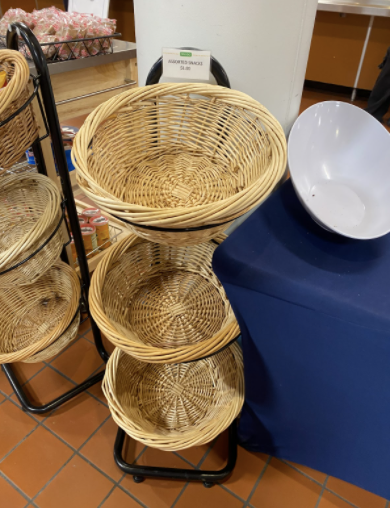
Shelves and baskets in the Staples cafeteria are empty during the third lunch wave, preventing many students from eating the food they wanted and from eating at all.
After more than four hours of learning, walking around school and socializing with friends, food is on every student’s mind. By the time third lunch comes around, stomachs are growling and students are hangry, but food is scarce.
The issue of empty shelves affects a third of the school everyday.
Adela Ardery ’24 finds this situation to be problematic, aligning with many other student’s beliefs as well.
“It’s not fair to us because if there is no food in the cafeteria then we don’t have anything to eat,” Ardery said. “I don’t eat breakfast in the mornings, so if I don’t have lunch then I go through the school day without eating.”
Ben Leahy, Director of Dining Services at Staples, discusses how Chartwells, the company that supplies Staples with food, ensures that all students have the opportunity to eat food in their assigned lunch wave, despite the contradicting frustrations from students.
“When we know [the frustrations], we are able to take some steps to increase production,” Leahy said. “In the event that we run short on something, corrections are always made for the next time we have that same meal to make sure we increase what we do.”
Leahy also discusses how Chartwells does not have a way of tracking the amount of money that comes from each lunch wave. The amount of food being purchased in the third lunch wave compared to the first or second would indicate a difference of food levels.
“We don’t track necessarily sales but we do track production, as far as what we produce each day,” Leahy said. “And the staff here keep records of that and as their menus cycle through the month, they prepare [food] based on those production records.”
Science teacher Kristin Leahy, whose classes always eat during third lunch, mentions some of the issues she sees in the low stock of food.
“When we have lab lunch and we’re late for third lunch, a lot of times by the time we’re there, they’re out of food,” Leahy said. “They try to make more [food], and the wait is even longer when you have a limited amount of time,” Leahy said.
Although affected by the issue every day, Leahy understands the balance that Staples and Chartwells tries to achieve when purchasing and supplying food for students, but is confident that students’ needs should come first.
“I’m sure there is a balance that they’re trying to deal with, with not having a surplus of food,” Leahy said. “But I think if the choice is to run out of food or to have too many leftovers[…] I think they should have too much food rather than too little.”
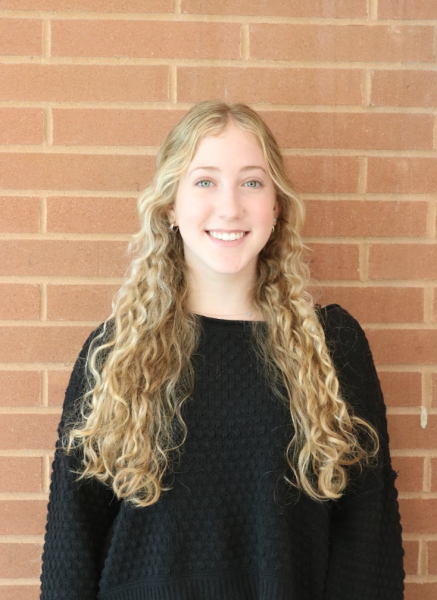
Web Managing Editor Jolie Gefen ’24 understands what it means to manage and organize, as this past summer she worked as a camp counselor for Westport’s...












































